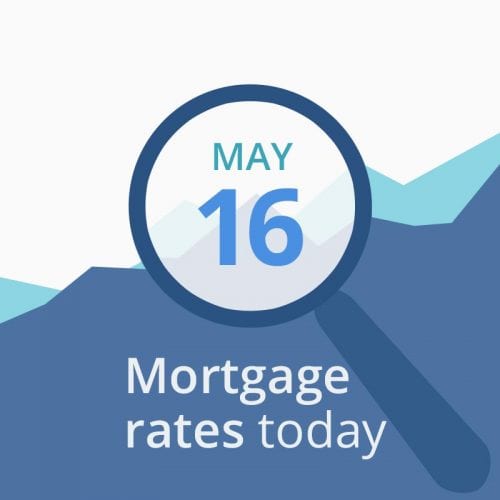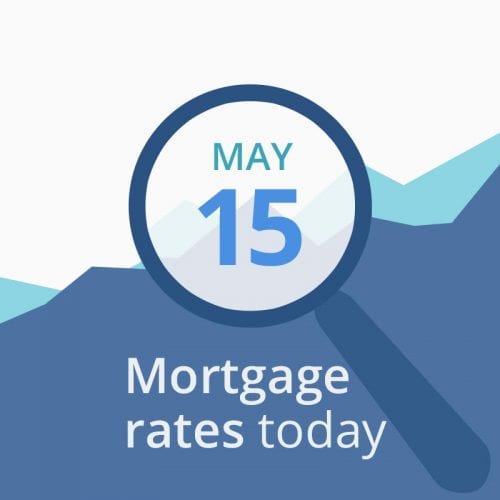
Reduce your refinance costs
Starting the mortgage refinance process can be intimidating.
The goal is to trade in your current mortgage for a new one that helps you reduce your rate and build equity faster.
But making mistakes during the process can result in higher costs.
The best way to refinance, though, involves knowing the most common mistakes and how to avoid them.
Six mistakes are some of the most prevalent in today’s refinance market. Here’s how not to make them.
Verify your refinance eligibility (May 12th, 2019)
In this article:
The best way to refinance is to know the most common mistakes and how to avoid them:
- Not optimizing your credit score. Even a one-point credit score increase can significantly reduce your mortgage fees.
- Failing to comparison shop. Consumers who receive multiple rate quotes can cut their interest rate.
- Tapping home equity too aggressively. It doesn’t make sense to finance short-term expenses with a long-term loan.
- Refinancing too often. Frequent refinancing extends your mortgage term. Financially stable borrowers should focus on lifetime savings over lower payments.
- Not checking your property value. You could pay too much to refinance your mortgage without an accurate home value.
- Assuming fees are non-negotiable. If you have good credit and have done some comparison shopping, you should have the leverage to bargain for a better deal.
First of all: How to refinance a house
Before you learn what mistakes not to make, you need to know how to refinance in the first place.
A refinance is simply trading your current loan for a new loan that is better in some way.
Some homeowners refinance to lower their payment or interest rate. Some refinance to turn pent-up home equity into needed cash. Still others refinance into a shorter term, like a 30-year loan into a 15-year one.
Any refinance is completed with essentially the same process:
- Make sure the refinance benefits you. Know your ultimate goal and see if you can achieve that. If you need a lower rate, make sure current rates are low enough. If you need cash out, make sure you have enough equity.
- Contact a lender. Yes, this can seem scary, but, by law, there is never any obligation to proceed with a refinance. You can cancel the whole thing up to the day before closing! But a lender, in minutes, can give you an accurate rate quote, check your credit, and send you numbers in writing.
- Shop for rates. You can reduce your rate by as much as 0.50% by contacting a few lenders.
- Make full application with your chosen lender.
- Sign initial disclosures that the lender will send you. Verify loan terms on the disclosures. Make sure you are still accomplishing your goal (lower rate, cash out, shorter term, etc.)
- Provide documentation to the lender such as income and asset verification.
- Submit loan conditions. The lender will submit your paperwork to the underwriter, who will request additional needed items, if any.
- Sign final paperwork which the lender prepares. You will sign at the escrow company.
- Wait 3 days. This is the rescission period — a “cooling off” period in which you have the chance to cancel the refinance at no cost. (Remember: your current loan is still intact and no changes have been made to it. Simply continue making payments.)
- Check with the lender on the 4th day. The loan will “fund,” meaning it’s a done deal. Your previous loan has been paid off in full.
- Start making payments on the new loan. The first one will be due 30-60 days after funding.
Now, without further ado, here are the top mistakes to avoid during a refinace.
Verify your new rate (May 12th, 2019)
1. Not optimizing your credit score
Your credit history is one of the most important criteria considered by mortgage lenders.
A one-point credit score increase — from 679 to 680 — can reduce your mortgage fees by one point. That’s $ 1,000 for each $ 100,000 financed.
Purging errors with a rapid rescore can raise your credit score by as much as 100 points in less than a week.
According to the Federal Trade Commission (FTC), 20 percent of credit reports contain wrong information. Five percent are so serious that they may burden the consumer with a much higher mortgage interest rate.
Before you start a refinance, order your credit reports from Equifax, TransUnion and Experian. Consumers, by law, are entitled to one free credit report per year from each major bureau.
Immediately report any errors. The bureau must remove any tradeline it can’t prove is yours.
Verify your refinance eligibility (May 12th, 2019)
2. Failing to comparison shop
A Consumer Financial Protection Bureau (CFPB) survey discovered that nearly half of all homeowners requested a quote from just one lender.
Consumers who received rate quotes from multiple lenders cut their interest rate by as much as 50 basis points (0.50%).
That’s more than $ 14,000 in mortgage interest savings on a three hundred thousand dollar loan over ten years.
Your current lender or local bank may not offer the best deal. Compare rates and fees from three to four lenders before you decide on one.
3. Tapping home equity too aggressively
Home values have risen more than 36% since 2012 according to Case-Shiller’s 20-City Home Price Index.
Owners are tapping into newfound equity to accomplish financial goals.
But one common mistake is financing short-term expenses with a long-term loan.
For instance, a car with a five-year life may not justify a 30-year mortgage loan. Likewise, a mortgage is an expensive way to pay for a month-long cruise.
Homeowners may receive more value by investing in home improvements, a college education, or a promising business venture with proceeds from a cash-out refinance.
Will your refinance yield good returns long-term? If the answer is “yes,” then a refinance might be your next step.
4. Refinancing too often
Mortgage interest rates are down by one-half of one percent so far this year.
Homeowners who purchased or refinanced a home last summer and fall are considering a new mortgage. Nearly 9 million homeowners can lower their rate with a refinance, according to Black Knight Financial Services.
That would be a good idea for most of them. But not all.
Here’s why: frequent refinancing extends the mortgage term again and again.
It is not uncommon for a long-time homeowner to be just one or two years into his mortgage. A refinance after five or ten years “resets” the loan, often to 30 years. The rate and payment fall dramatically while yielding little or even negative savings.
Sometimes the lowest possible payment is priority one for a homeowner with limited cash flow. Perhaps a divorce, layoff, or illness reduced income. In these cases, extending the loan could be a wise move.
However, financially stable borrowers should focus on lifetime savings. One strategy many homeowners employ is to refinance into a mortgage with a shorter term. Ten- and 15-year loans are growing in popularity
Alternatively, make additional principal payments to avoid extending your repayment timeframe.
Verify your refinance eligibility (May 12th, 2019)
5. Not checking your property value
A recent survey by Fannie Mae revealed that a substantial number of U.S. homeowners are underestimating the current value of their homes – in part because they don’t realize how much home prices have risen since 2011.
Without an accurate estimate of your home’s value, you could easily pay too much to refinance the mortgage.
If your estimate is too low, you can overlook savings opportunities. Adequate equity lets you eliminate mortgage insurance or obtain a lower interest rate.
Conversely, if your estimate is too high, you may not receive your desired mortgage rate. Less equity can mean higher rates.
Yet, some loan products do not take into consideration your home’s value. The FHA streamline refinance does not require an appraisal, and is available to current FHA homeowners.
Likewise, VA loan rates are not based the home’s value. Your current VA loan is the litmus test for eligibility. The lender does not typically request an appraisal, saving the applicant the associated fee.
However, if your loan type requires documented home value, there are several ways obtain a realistic estimate.
Online valuation tools have improved. Even better, request a Broker’s Price Opinion (BPO) or Comparative Market Analysis (CMA) from a local real estate agent. The cost, if any, is a fraction of a typical appraisal fee.
6. Assuming fees are non-negotiable
You don’t have to accept an offer “as is.”
In addition to interest rates, many fees may be negotiable. Multiple offers may persuade lenders to compete against each other for your business.
Third-party fees like title and escrow may be negotiable, depending on your state’s laws.
Provided you have good credit and have done a little comparison shopping, you should have enough leverage to bargain for a better deal.
What are today’s mortgage rates?
Mortgage rates are low, and continue below historical levels. Today’s rates combined with refinance best practices yield solid value for homeowners.
Request a mortgage rate. Quotes are available immediately with no obligation, and a social security number is not required to start.
Verify your refinance eligibility (May 12th, 2019)
Mortgage Rates, Mortgage News and Strategy : The Mortgage Reports





